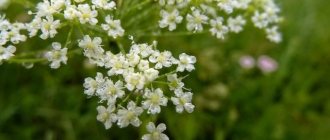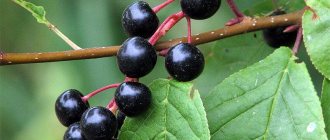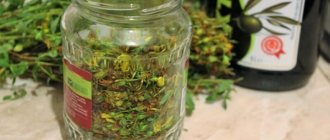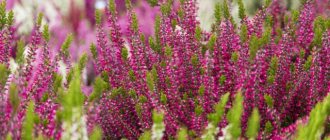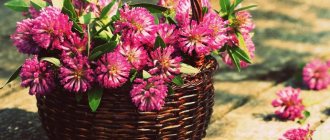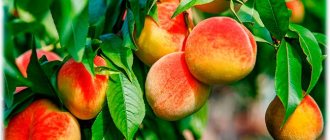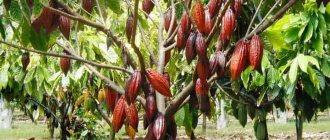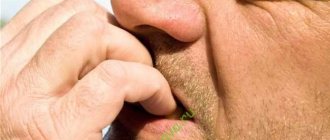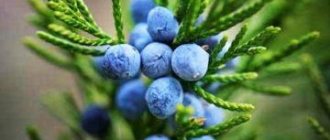What beneficial properties does garden lilac have, how to properly prepare the tincture and decoction for treatment, and what may be contraindications for use? Read more about this in our article.
Lilac is a shrub that is widely used for planting among gardeners and summer residents. The beautiful flowering of this plant is used for decorative decoration of personal plots. Many people love lilacs for their extraordinary aroma; for some, blooming lilac branches remind them of childhood and school exams. In addition to its aesthetic qualities, this plant contains a large number of substances beneficial to health and is successfully used in herbal medicine recipes.
Plant properties
The benefits of lilac tincture and its healing effects on the body are due to the substances contained in the plant. There are many varieties of this shrub in the world, but they all have approximately the same chemical composition:
- essential oils - have an anti-inflammatory, bactericidal effect, which helps with colds and coughs;
- tannins - have bactericidal, astringent, anti-inflammatory properties, which is important for joints with arthritis and gout;
- flavonoids - resist the action of harmful fungi and bacteria, strengthen blood vessels;
- coumarins - thin the blood, improve heart function;
- Vitamin C is an antioxidant and has a powerful immunostimulating effect.
The glycoside syringin also imparts medicinal properties to lilac. This substance has a local irritant effect and, in particular, in the composition of mustard powder is used as a warming agent.
Useful properties of lilac
Lilac, including white lilac (especially its flowers) has a lot of medicinal properties and is used in traditional medicine recipes, but you should always use it with caution and remember about contraindications. The plant has a number of effects on the body:
- antipyretic;
- anti-inflammatory;
- diuretic;
- diaphoretic;
- soothing;
- pain reliever;
- antitussive;
- hypoglycemic;
- anticonvulsant;
- wound healing;
- astringent;
- antirheumatic.
Tincture recipes
The plant has played a special role in traditional medicine recipes for quite some time. Lilac tincture has the most effective effect. Now you will learn how to make such a medicine. Here are several famous recipes.
Recipe No. 1
Ingredients:
- Flowers plants;
- Alcohol or vodka.
Preparation
- Pour one part of the flowers with one part of alcohol.
- Let it brew for a day and the medicine is ready for use.
Recipe No. 2
Ingredients:
- Flowers of the plant - 500 g;
- Vodka - 0.5 l.
Preparation
- Take the flowers and pour them into a half-liter container.
- Pour vodka over it all and leave for 20 days in a secluded dark place.
- Strain the liquid and it is ready for use.
Recipe No. 3
Ingredients:
- Lilac leaves - 250 g;
- St. John's wort - 250 g;
- Vodka - 1 l.
Preparation
- Finely chop the leaves and mix one to one with the herb.
- Place in a jar and add a liter of vodka.
- Leave for a week and filter through cheesecloth.
Recipe No. 4
Ingredients:
- Lilac leaves - 50 g;
- Alcohol - 250 g.
Preparation
- To prepare the tincture, you will need 1/4 cup of crushed leaves.
- They are poured with a glass of alcohol and allowed to brew for 8 hours.
- Afterwards, the medicine will be ready.
Tuta is here! Recipes for mulberry liqueurs
Application of lilac recipes
Tinctures with vodka and alcohol are prepared from lilac, ointments, poultices, decoctions, and compresses are made. Recipes for using lilac are described in many reference books and books on traditional medicine. Let's get to know some of them.
Tea for epilepsy
This tea can be drunk for a long time, for several years. It reduces the frequency of epileptic seizures and reduces convulsions. Brew tea as follows: pour 1 teaspoon into a glass (250 ml) of boiling water and steep for 20 minutes. Drink it 100-250 ml two to three times a day.
Lilac tea for vision
Tea with fresh flowers will help relieve fatigue at the end of the working day and improve visual acuity. Brew tea as in the previous recipe. After infusion, filter and moisten a bandage, cotton swab or gauze folded in several layers. Apply for 10 minutes before bedtime.
Diabetes treatment
Brew two tablespoons of lilac buds with 0.5 liters of boiling water and leave for 6 hours, well wrapped or in a thermos. After infusion, strain and drink one tablespoon before meals.
Lilac tincture for pulmonary tuberculosis
Take lilac flowers and leaves in equal proportions. A liter jar is filled with this mixture to 2/3 of its volume and filled with 1 liter of vodka. Leave in a dark place for 7 days and filter.
Take 1 tablespoon of tincture twice a day before meals.
Treatment of varicose veins
Treatment of varicose veins with the help of lilac is described in the book by Ekaterina Andreeva “Treatment of varicose veins with proven folk recipes.” In this book, she gives two recipes using leaf decoction and fresh leaves.
According to the first recipe, you need to wash the young, just blossomed leaves and brew them with hot water. Boil in a water bath for about 10 minutes and strain. Moisten a cloth in the resulting decoction and apply a compress to the affected veins. Apply such lotions for half an hour.
According to the second recipe, you simply apply fresh leaves to the swollen veins and secure them with a bandage. Keep the bandages on for half an hour.
You can apply it several times during the day. This will relieve inflammation and pain, improve blood flow in the veins.
Treatment of malaria
Malaria was treated with lilac back in the days when this disease was very common and affected thousands of people.
Recipe 1
Take 20 grams of fresh (they should just bloom and still be sticky) leaves and pour one glass of boiling water. Wrap the container well and leave for an hour and a half.
Take 1 teaspoon of dried leaves and brew a glass of boiling water. Let it brew for 20 minutes and drink it as tea several times, hot or warm.
Then the infusion is filtered and drunk 100 grams twice a day: on an empty stomach immediately after sleep and in the evening before going to bed. The course of treatment is 10 days.
It is allowed to use the infusion up to 3 times a day, half an hour before meals.
Recipe 2
A decoction is prepared from young (not yet woody) branches along with leaves. Take 300 grams of raw material and chop it finely. Pour one liter of boiling water and cook over low heat for 10 minutes.
After removing from the stove, leave for another two hours and filter. Drink 100 ml decoction three times a day.
Collection of lilacs and wormwood
To prepare the collection, take 20 grams of fresh leaves and 1 teaspoon of wormwood. Grind and pour into a bottle or jar. Pour 1 liter of vodka and add half a teaspoon of eucalyptus essential oil.
Leave to brew for 14 days, shaking the container periodically. After infusion, filter and drink 2 tablespoons before meals.
Tincture of white lilac flowers - recipe with vodka or alcohol
White lilac is not used so often, but it also has extraordinary positive effects. In principle, we can state the fact that they are almost identical to those observed when using folk remedies from lilac flowers of the bush.
And the not so significant popularity of products made specifically from white lilac can be explained by the fact that it is not as widespread as common lilac. Among other things, white flowers are especially good for helping with heel spurs.
To prepare the remedies, you should take 100 grams of fresh, just picked flowers and pour 1 liter of vodka (alcohol, moonshine) over them. Leave in a cool, dark place for about 12 days. After that, you can apply it. Shake the jar before each use.
Apply 3-4 times a day, making lotions for 20-30 minutes. At the same time, you can use the infusion orally: 20 drops 2 times a day before meals. This will help significantly enhance the positive effect.
3
Indications for use
Ready-made flower tincture treats the following diseases and painful conditions:
- renal, the drug is used for stones in the renal pelvis;
- tuberculosis, pneumonia: dilutes sputum, helps remove it from the respiratory system;
- malaria, colds, fever: will lower body temperature, have a diaphoretic effect;
- colds and other inflammatory processes;
- diseases of the heart and blood vessels;
- headaches, migraines;
- injuries, bruises;
- disorders of the nervous system, has a calming effect;
- fungal, bacterial, viral, ringworm;
- heel spurs;
- arthritis, gout, rheumatism, osteochondrosis, osteoporosis.
How to use lilac tincture
The benefits of lilac tincture are revealed in many diseases - the folk remedy gives an excellent effect. The tincture can be mixed with other medicinal components, slightly changing the dosage and time of administration.
From high temperature
The beneficial properties of the plant help reduce fever during flu and colds and eliminate intoxication of the body. For medicinal purposes, a tincture of alcohol or vodka is taken on an empty stomach, only 50 ml three times a day.
To increase effectiveness, you can add 5 drops of eucalyptus oil and 5 g of crushed fresh wormwood to the classic remedy. The ingredients will enhance the anti-cold properties of the tincture and help relieve fever even more quickly.
Against cough
For bronchitis and persistent colds, the medicinal properties of lilac are also beneficial. A good effect is demonstrated by the usual tincture diluted in warm tea without sugar - you only need to add 20 ml of the medicine per cup of tea.
Take the tincture immediately before bedtime. In total, treatment can be continued for no more than a week, since the medicine contains alcohol; if used for a long time, it will harm the body.
For sore throat and laryngitis
The properties of lilac leaves and flowers are beneficial for inflammatory processes in the throat. In this case, it is recommended not to drink the tincture, but to use it for rinsing. Just 2 large spoons of the product are diluted in a glass of water and gargled 4-6 times a day.
For lower back pain
For muscle strains, rheumatism and other pain in the lower back and back, rubbing with a tincture of the plant is beneficial. A small amount of the product is applied to the sore spot and rubbed in with strong movements. Lilac has a warming effect, and the beneficial substances in its composition, penetrating into the tissues through the skin, relieve inflammation and pain.
For kidney diseases
The benefits and harms of lilac flowers are used for kidney ailments - the plant tincture relieves inflammatory processes and helps eliminate stones. For 500 ml of vodka, take only 50 g of raw material, mix and close the lid, and then keep the tincture in the dark for 2-3 weeks. Take it three times a day, 20 drops on an empty stomach; therapy can be continued for no longer than 3 weeks to avoid harm.
Attention! In case of kidney disease, an overdose of alcohol tincture becomes especially dangerous. You can use the product strictly in accordance with the recipe, without exceeding the specified daily allowances, otherwise it will be harmful to your health.
For headaches
The smell of lilac is beneficial for migraines and headaches associated with vascular spasms. In this case, the tincture is used externally - a cotton pad or gauze swab is soaked in the medicine, and then wiped on the forehead and temples. After a quarter of an hour, the headache should subside.
For wounds and bruises
Another area of application for the healing properties of lilac is skin damage and bruises. Wounds, abrasions, hematomas and burns can be wiped with a diluted tincture - 10 drops of the product per 100 g of water.
For osteochondrosis, arthritis and arthrosis
The benefits of lilac for joints are manifested in the vast majority of diseases - the tincture relieves inflammation, eliminates the feeling of stiffness, and reduces pain. The tincture is prepared according to the traditional recipe, and you drink only 20 drops twice a day so as not to cause harm.
For severe pain, the affected joints can be rubbed with the medicine. A useful tincture will properly warm the sore spot and quickly relieve discomfort.
For gout
The benefit of lilac buds is that a tincture based on them can remove deposits of harmful salts from joints. For gout, it is recommended to take the product with alcohol three times a day in a small dosage - only 15 drops on an empty stomach, so that there is no harm.
For varicose veins
Rubbing with a healing tincture can improve the condition of legs with varicose veins. The ingredients for the medicine are mixed in the usual proportions - 100 g of raw materials per liter of alcohol or vodka. But you need to infuse the product longer, for 1.5 months.
The treatment itself is as follows: twice a day, the protruding veins on the legs are moistened with the tincture, but not rubbed in, but left until dry. In combination with medications and physical therapy, lilac has an excellent effect in the fight against varicose veins.
For tuberculosis
Phytoncides, essential oils and flavonoids in lilac have a beneficial effect on the respiratory system. With the help of a tincture of the plant, even the symptoms of tuberculosis can be mitigated. The tincture prepared in the usual way is taken twice a day on an empty stomach in the volume of a small spoon.
Advice! To increase the beneficial properties, lilac can be mixed with fresh or dry St. John's wort at the first stage of preparing the tincture - there will be no harm from this.
White lilac: contraindications
Amenorrhea;
Chronic renal failure;
Glomerulonephritis;
Atonic constipation;
Exacerbation and chronic diseases of the stomach.
Before starting treatment, be sure to consult with your doctor.
The most common of them:
- delayed menstruation in girls;
- the occurrence of kidney inflammation;
- the occurrence of constipation.
Therefore, it should be remembered that lilac tincture can be both healing and dangerous. Follow the exact recommendations and rules for using the medicine and do not take the medicine in larger quantities than prescribed by the norm.
The reader should be aware that components should be handled with care. Lilac is a poisonous plant, so you need to prepare infusions for oral administration strictly according to the recipe, without going overboard with the ingredients.
You should also know that tinctures are prohibited for oral use by patients with amenorrhea, chronic renal failure, constipation, severe stomach diseases, glomerulonephritis, allergic reactions or individual intolerance.
- amenorrhea (this is a long delay in menstruation);
- chronic renal failure;
- atonic constipation;
- severe stomach diseases;
- glomerulonephritis.
In all other cases, treatment with lilac is permitted without fear. If you have chronic, protracted diseases that are under the control of a doctor, it is recommended to take a preliminary consultation with a specialist so as not to harm the body.
Wormwood tinctures: 4 recipes at home
Substances included in the composition
The composition of lilac buds includes:
- farnesol;
- essential oils;
- vegetable resins;
- glycoside syringin.
There is significantly less of it in the kidneys, which is why it is recommended to use them in alternative medicine, but you must first consult with your doctor.
What impact do they have?
Due to the presence of farnesol and essential oils in the composition, such drugs increase sweating, slow down the course of the inflammatory process, and slightly reduce elevated body temperature.
But the combination of plant resins has a positive effect on neuralgia. That is why lilac is often used to prepare compresses for rheumatism and neuropathy.
Patients with diabetes mellitus use lilac buds to prevent optic nerve atrophy (mostly found in patients with type 1 diabetes).
Allergy to lilac: symptoms
Allergic reactions to lilac are associated with the rather sharp and persistent odor of the inflorescences, a large amount of pollen during the flowering period and the active substances contained in the plant parts. Only an allergist can establish a reaction to a particular irritant after conducting appropriate tests.
Symptoms of a lilac allergy are usually similar to those of diseases caused by weakened immune system function:
- inflammation of the nasal mucosa
- conjunctivitis
- complications from the respiratory system - up to asthmatic manifestations and signs of suffocation
- in rare cases, swelling and serious damage to the visual apparatus are observed
Procurement of raw materials
The medicinal raw materials of the shrub can be all above-ground parts of the plant. These are inflorescences, leaves, buds, branches. Buds and flowers are collected at the time of their appearance, but when to pick leaves does not matter; any warm season is suitable.
Dry weather is important for harvesting. The bush should grow away from dusty roads. There is an opinion that white lilac tincture is more effective. However, scientifically, no significant differences have been found between plants of different colors.
The leaves and buds are dried, spread in a thin layer on a lined wire rack. And the inflorescences and branches are in a suspended and straightened state. Drying should take place under a canopy. Dried lilacs can be stored for two years in fabric bags or paper bags.
Lilac leaves uses
Lilac leaves can be used fresh or dried. Fresh leaves are used for compresses, their juice is rubbed into the temples for headaches.
Antipyretic infusion of leaves
Brew two tablespoons of leaves with 200 ml of boiling water and let it brew for an hour. After infusion, strain and drink one glass three times a day.
Decoction of leaves for kidney disease
Pour 2 tablespoons of dried leaves into 0.25 liters of hot water and bring to a boil. Immediately remove and leave for two to three hours, covered with a towel or poured into a thermos. Filter and drink 2 tablespoons 4 times a day before meals.
The course of treatment is 2 weeks. A second course can be repeated after two to three months. This decoction helps with inflammatory processes in the kidneys.
A paste of crushed fresh leaves is applied to boils, wounds, ulcers, and various abscesses. In winter, you can make a poultice with dried leaves. To do this, crushed leaves are poured with a small amount of boiling water and allowed to brew. Then the paste from the leaves is transferred to a layer of gauze or bandage and applied to the affected area.
At first, it is recommended to do such compresses up to 3-4 times a day. As healing progresses, you can apply it only once.
Before applying bandages, it is advisable to wash the wounds with alcohol tincture of lilac.
For headaches, crushed fresh leaves are applied to the forehead or the back of the head.
The paste from the leaves is used to treat stye on the eye. To do this, several well-washed lilac leaves are crushed and this mass is applied to the whole leaf. Apply to barley 5 to 6 times a day. The leaves accelerate the ripening process, draw out pus and relieve inflammation.
Peculiarities
Lilac is a shrub that has about 10 varieties. Let's look at its characteristics in more detail. The diameter of the plant trunk can reach 20 cm, and it can grow up to a maximum of 8 meters. Its life period can last up to 100 years, which is quite a long time for a shrub. The flowers are small, fragrant, and can be white, pink or lilac. They are collected in conical brushes.
The shrub grows in mountainous areas and is distributed throughout Russia, Bulgaria, and Siberia. Also, its habitat was seen in the Carpathians and the Balkans. Lilacs begin to bloom in May. To collect and prepare the tincture, take the buds, flowers, bark and leaves of the bush. The medicinal components of the plant must be collected before the flowers bloom. To prepare medicines, lilacs are picked along with the branches, collected in several bunches and dried.
Contraindications to the use of lilac tincture
We should not forget that even the safest remedy has its contraindications and warnings for use. The same applies to lilacs.
Take lilac tincture orally only after consulting a doctor.
Contraindications:
- Children's age up to 16 years! Can be used externally starting from 5 years of age, after prior consultation with a pediatrician.
- Individual intolerance.
- Acute diseases of the gastrointestinal tract.
- Glomerulonephritis.
- Amenorrhea.
- Kidney failure (chronic).
- Atonic constipation.
In any case, before you start using this or that product prepared on the basis of white, and even more so purple, lilac, it is better to consult a general practitioner or pediatrician (if we are talking about a child). Be healthy!
Healing aloe with honey - the best recipes and methods of use
2
Recipe for making tincture
Lilac tincture can be purchased at a pharmacy or made yourself. If you follow the rules for collecting and preparing raw materials, follow the preparation technology, you will get a high-quality medicinal product. Raw materials must be collected during the flowering period of the plant, in dry weather. It is necessary that the collection site be located far from factories, in environmentally friendly areas.
To prepare the tincture according to the classic recipe, you will need the following ingredients:
- lilac flowers – 100 g;
- vodka or medical alcohol – 900 ml.
The prepared plant material should be poured into a glass container (ordinary jar or bottle), and vodka should be poured into it. Close the container and leave for 9-12 days in a place protected from sunlight. The resulting alcohol composition must be filtered through cheesecloth. The tincture can be used as a medicine for internal use, as well as in the form of lotions and compresses.
To treat diseases, the tincture is prepared in different quantitative ratios of the main and auxiliary ingredients:
| Disease | Vodka, ml | Lilac flowers, g | Additional Ingredients and Notes |
| Renal | 1000 | 50 | You can use lilac leaves in a 1:1 ratio |
| Cardiovascular | 500 | 200 | |
| Rheumatism | 450 | 50 | |
| Cough of various origins | 1000 | 40 | |
| Phlebeurysm | 400 | 200 | |
| For the treatment of joints | 3000 | 20 | 10 g each of willow bark and bay leaf |
| Osteochondrosis, arthrosis, arthritis | 100 | Honey - 200 g, 10 g lilac leaves, radish juice 300 g juice | |
| Bruises, lichen | 500 | 50 |
You must store your own lilac medicine in a dark room. Store for one year out of the reach of children.
This excerpt (second) is taken from the article: https://lechim-vmeste.ru/nastoyka-tsvetov-sireni-vodke/
Lilac - medicinal properties and use in folk medicine
Lilac has its medicinal properties, as well as contraindications, due to its unique chemical composition. Various parts of the plant contain:
- Phytoncides, alkaloids, flavonoids.
- Essential oil, tannins.
- Ascorbic acid (vitamin C).
- Bitter glycoside syringin (during the breakdown of the substance hydrocyanic acid is formed), farnesol.
- Tannins, resins.
The flowers are just beginning to bloom - it’s time to harvest for treatment.
For medicinal purposes, medicinal flowers are harvested when the bush is just beginning to bloom. The inflorescences are cut along with the branches and dried, hanging in the shade in the fresh air. Leaves are collected until mid-summer. The bark is harvested from young branches in early spring, while the sap is flowing. Buds - in March, when they are swollen, but not yet blooming.
The collection is carried out in dry weather, away from the industrial zone and busy roads. Always dry in the shade, spread out in a thin layer or using a dryer (temperature 40 - 50 degrees). Fresh raw materials contain a certain amount of toxic substances, so they are used only externally.
Official medicine does not use lilac. In folk medicine, it has long been used:
- Kidneys - for diabetes. Pour 20 g of raw material into 1 tbsp. water, heat for 10 minutes in a water bath. After cooling, filter, dilute with boiled water to 200 ml. Take 1 s. l. three times a day for 2 weeks. A month later the course is repeated.
- Leaves:
- For inflammatory kidney diseases, stones in the renal pelvis. Prepare a tincture of leaves in vodka (ratio 1:20). Take 15-20 drops three times a day before meals. You can drink the water extract: 2 s. l. dry raw materials (crushed) pour 1 tbsp. hot water, bring to a boil (but do not boil!), filter after 2 - 3 hours. Take 2 s. l. before meals three times a day.
- Against malaria. Taken in the form of tea.
- For festering wounds, ulcers. An infusion of fresh leaves (2 tablespoons of leaves per 1 tablespoon of boiling water) is used for lotions and washing of affected areas.
- For headaches, apply fresh leaves to the head.
- From stye on the eye. Apply a paste of fresh leaves, wrapped in gauze.
- Bark - for festering wounds, ulcers, erysipelas of the skin (a decoction is used externally for washing).

